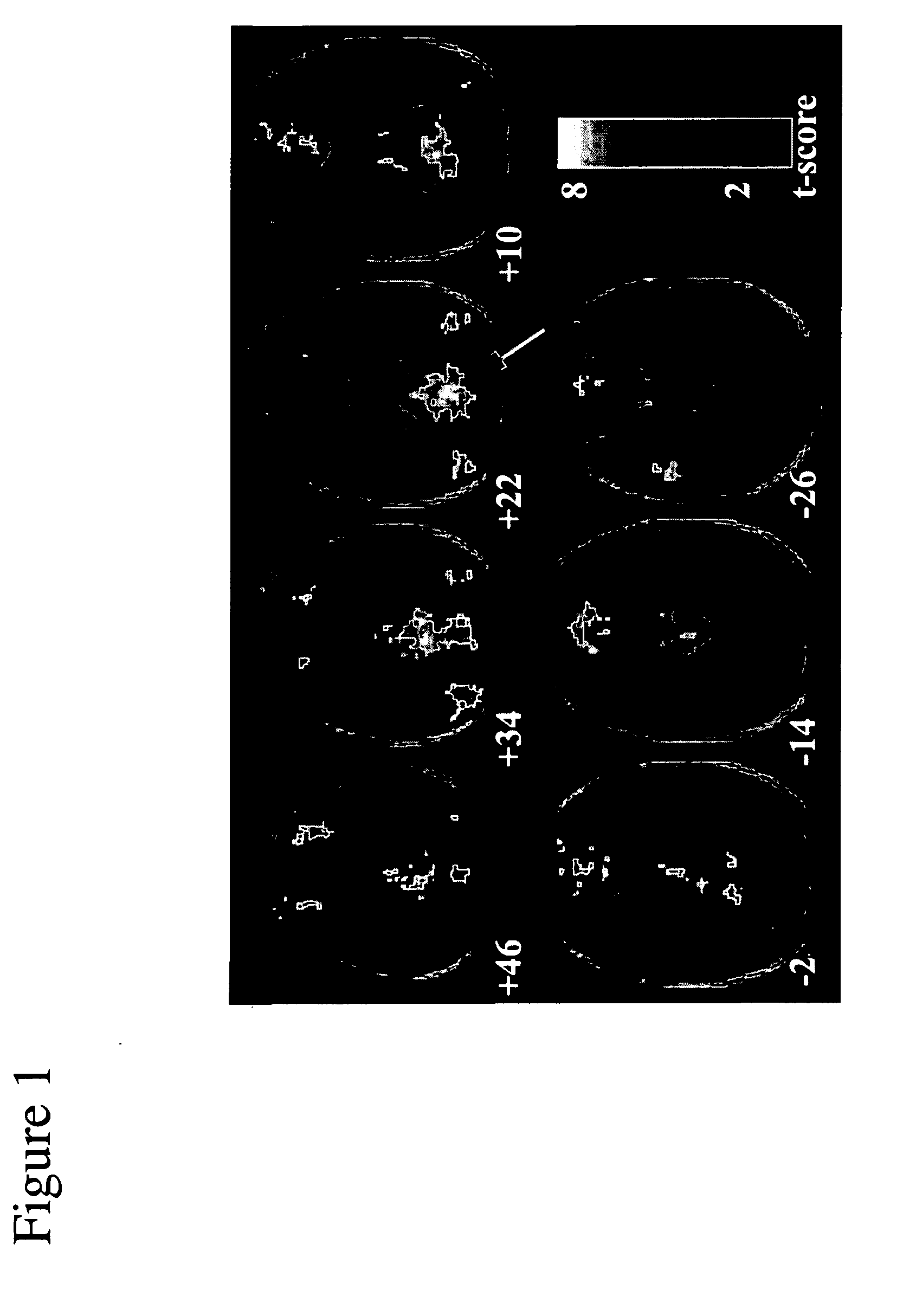Evaluation of Alzheimer's disease using an independent component analysis of an individual's resting-state functional MRI
a technology of alzheimer's disease and independent component analysis, applied in the field of alzheimer's disease, can solve the problems of limiting physical and mental abilities, unpreventable and incurable, and destroying memory function,
- Summary
- Abstract
- Description
- Claims
- Application Information
AI Technical Summary
Benefits of technology
Problems solved by technology
Method used
Image
Examples
Embodiment Construction
[0013] Acquiring Resting-State Data
[0014] Using a functional MRI (fMRI) protocol subjects are scanned during a standard period of rest. One may also acquire more than one resting-state scan and use the best score of several scans, the median score, the mean, or the like. Standardized instructions are given such as “for the next 6 minutes please relax and try not to move”.
[0015] Preprocessing Steps
[0016] Typical fMRI preprocessing steps are performed on the resting-state data, e.g. realignment, normalization, and / or smoothing. The normalization step may take place before or after the Independent Component Analysis (ICA) has been performed. However, normalization needs to be performed before the default-mode component is matched to the standard template (see below).
[0017] Independent Component Analysis (ICA)
[0018] ICA is a statistical technique that separates a set of signals, in this case fMRI data, into independent—uncorrelated and non-Gaussian—spatiotemporal components. The ap...
PUM
 Login to View More
Login to View More Abstract
Description
Claims
Application Information
 Login to View More
Login to View More - R&D
- Intellectual Property
- Life Sciences
- Materials
- Tech Scout
- Unparalleled Data Quality
- Higher Quality Content
- 60% Fewer Hallucinations
Browse by: Latest US Patents, China's latest patents, Technical Efficacy Thesaurus, Application Domain, Technology Topic, Popular Technical Reports.
© 2025 PatSnap. All rights reserved.Legal|Privacy policy|Modern Slavery Act Transparency Statement|Sitemap|About US| Contact US: help@patsnap.com



